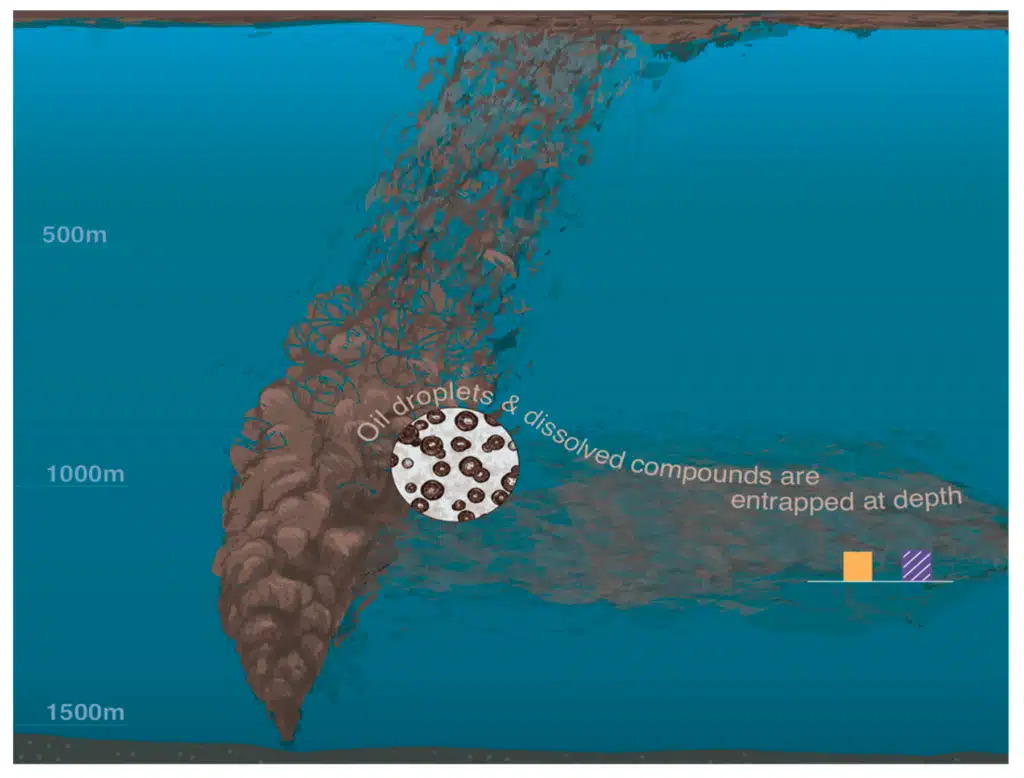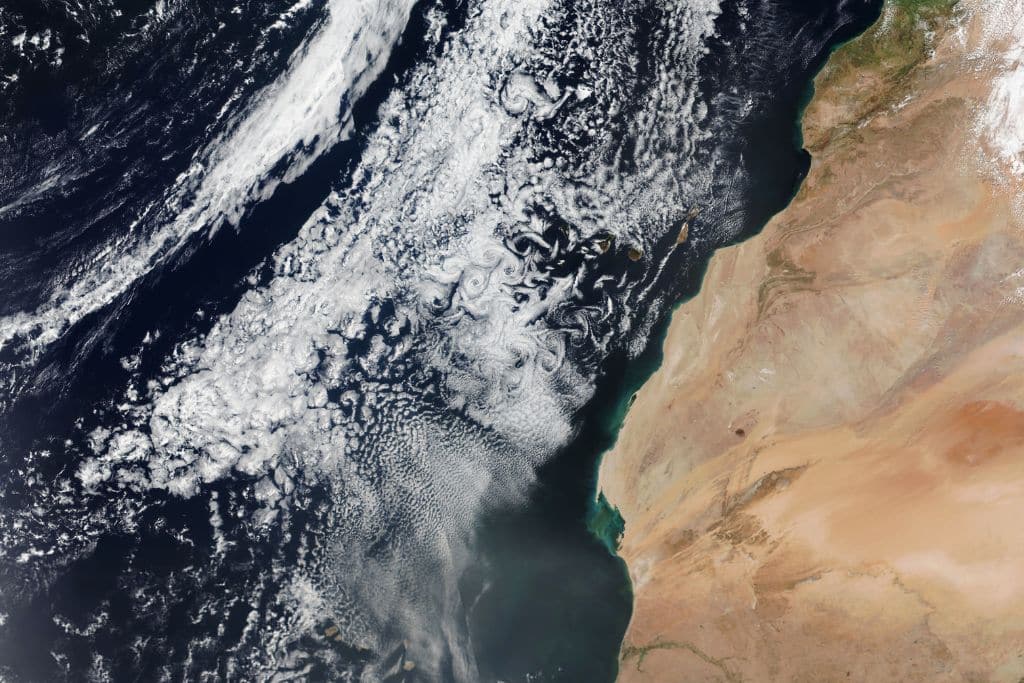When we picture the tools we deploy to fight climate change, we often think of renewable energy and electric vehicles. Rarely do we think about simulations.
—
Computational Fluid Dynamics (CFD) is a branch of science that uses the physics of fluids (like water, air, fuel, flames etc.), mathematics and computer science to create accurate real-life simulations.
CFD aids researchers in simulating everything from droplets to complex ocean currents and atmospheric turbulence. It is a powerful tool that plays a vital role in understanding and predicting the behavior of complex natural systems and extreme weather events.
Map of Ocean currents with sea surface temperature data. Image: NASA/Goddard Space Flight Center Scientific Visualization Studio.
The Earth’s climate represents a massive complex fluid dynamics problem. For example, as shown in Figure 1, air flow over Canary Island generates a swirling vortex called the von Kármán vortex street, a phenomenon also seen in classic fluid dynamics scenarios such as flow past a cylinder.
Every climate event, from air and ocean currents to rainfall, hurricanes, tornadoes, and heatwaves, involves the movement of fluid (air, water, droplets, humidity). By using the equations governed by fluid flow, CFD can simulate these natural phenomena accurately with the help of high performance computers and mathematics. For instance, the MIT General Circulation Model (Figure 2) is used to study ocean currents and heat transport, helping us understand long-term ocean trends.
Other models and simulations from these models help researchers understand how heat and moisture are transported in the atmosphere, predict how oceans circulate heat across the planet, simulate the formation and path of hurricanes or cyclones as well as model the impact of melting ice sheets and rising sea levels.
Clean Energy Modelling
Implementing renewable energy infrastructure like wind farms, tidal power stations, or other clean sources like nuclear requires costly and energy-intensive physical testing. This, in turn, can generate carbon emissions and material waste, partly offsetting the environmental benefits associated with these technologies.
Simulations offer a sustainable alternative and help engineers design, optimize, and implement clean energy technologies with far less environmental impact. For instance, as shown in Figure 3, CFD simulations can be used to optimize turbine blade shapes or determine the most efficient layout of turbines across wind farms to reduce wake loss and maximize energy output. Similar approaches are used to model cooling systems in solar farms or simulate flow dynamics in tidal and nuclear energy systems.
These digital experiments are not only faster and more cost-effective but also significantly reduce carbon footprint and material waste.
More on the topic: Air Flow Design Is the Quiet Champion of Climate Resilience
Oil Spill Prediction and Control
Earth’s water resources have constantly been polluted by industrial waste, sewage discharge, littering, and agricultural runoff. Accidental or not, oil spills pose a great threat to the environment and marine eco-systems, as seen in disasters like the 2010 Deepwater Horizon spill – the largest marine oil spill in history.
CFD is used to study how oil spreads in the ocean. These simulations help predict how oil moves through water, how it breaks apart, and how it interacts with wind, waves, and currents.
 Schematics of subsea oil spill. Image: Barker et al./MPDI (2020).
Schematics of subsea oil spill. Image: Barker et al./MPDI (2020).
For example, the ADIOS model developed by the National Oceanic and Atmospheric Administration (NOAA) uses such simulations to estimate how oil might behave under different conditions. Various other computational tools have also been used to simulate how oil rises from deep-sea blowouts and travels through the ocean. These tools help emergency teams respond faster by showing where the oil will go and how to contain it without needing to run expensive or polluting physical tests.
This technology allows us not only to better prepare for oil spill emergencies but also to improve laws and safety regulations.
What the Future Holds
The examples discussed above are just the tip of the iceberg. There are many more ways computer simulations, including CFD, are helping us tackle climate change. Of course, building these high-fidelity simulations comes with its own challenges.
Running simulations requires computing power, which consumes energy and contributes to carbon emissions. However, the environmental cost of simulations is only a small fraction compared to that of full-scale physical experiments
The world of computational science is evolving rapidly. New algorithms and numerical techniques are constantly improving simulation efficiency, reducing both time and energy requirements. Moreover, more data centers are transitioning to renewable energy and are being cooled effectively. From liquid cooling systems to hybrid designs, these advancements significantly lower the carbon footprint of large-scale simulations.
As the climate crisis deepens, the need to act swiftly and smartly grows. CFD doesn’t just help us predict the future, it allows us to design better solutions, reduce waste, and avoid environmental damage before it begins. It lets us simulate the world we want to build and the ones we hope to avoid.
Featured image: Allison Nussbaum/NASA Earth Observatory.
Our non-profit newsroom provides climate coverage free of charge and advertising. Your one-off or monthly donations play a crucial role in supporting our operations, expanding our reach, and maintaining our editorial independence.
About EO | Mission Statement | Impact & Reach | Write for us

